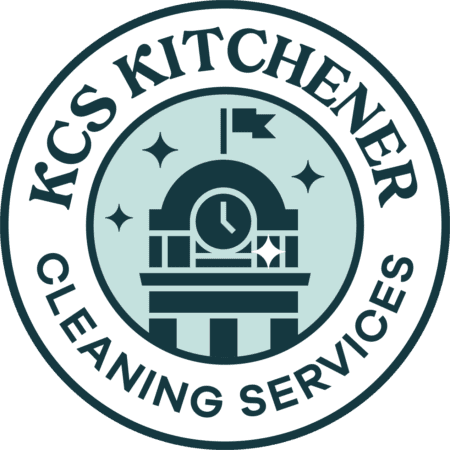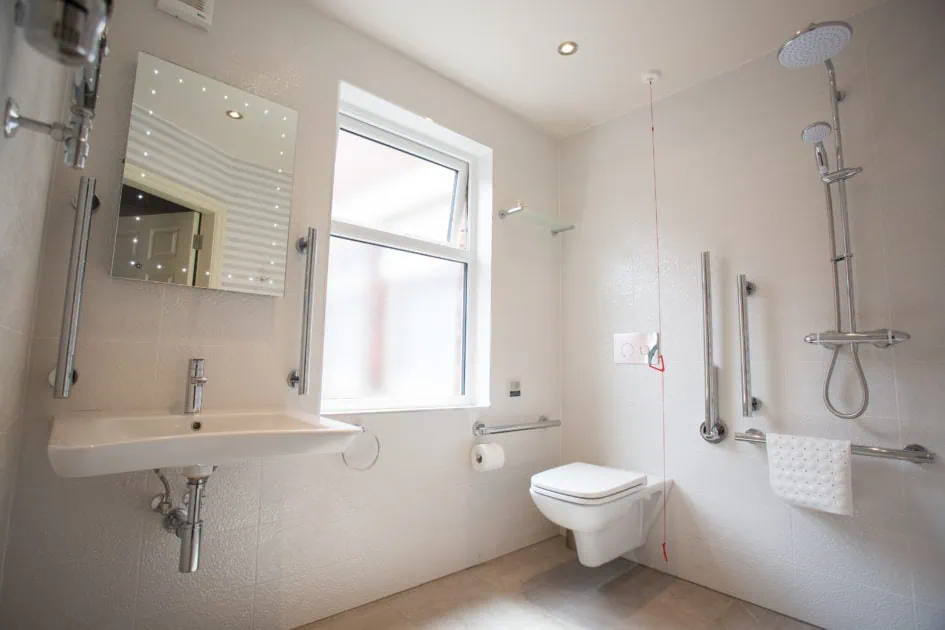Are you tired of battling mould in your bathroom? You’re not alone. Mould loves damp, dark spaces, making bathrooms a favorite hangout spot.
But fear not! With the right ventilation tips, you can prevent mould from taking over your space. This article explores how proper ventilation can combat mould growth by reducing indoor moisture levels, a cornerstone of mould prevention.
From using exhaust fans to keeping windows open, we’ll guide you through best practices to keep your bathroom dry and mould-free. Plus, we’ll share some cleaning tips and natural remedies to tackle any mould that dares to appear. So, let’s turn those exhaust fans on and wave goodbye to mould for good!
How Does Ventilation Prevent Mould Growth?
Ventilation plays a pivotal role in preventing mould growth, a concern for homeowners and building occupants due to its health risks and damage to structures. By understanding the critical link between ventilation and moisture control, individuals can take proactive steps to safeguard their homes against mould infestation, ensuring a healthier living space.
Reduces Humidity to Below 60%
Maintaining indoor humidity levels below 60% is crucial in preventing mould growth. High humidity provides the perfect breeding ground for mould spores, but by effectively managing ventilation, the moisture content in the air can be significantly reduced. This is achieved through the strategic use of exhaust fans and dehumidifiers in areas prone to dampness, such as bathrooms, kitchens, and basements.
By keeping the humidity under this threshold, the environment becomes less hospitable for mould, thereby preventing its proliferation.
Circulates Fresh Air, Removing Spores
The circulation of fresh air plays a vital role in removing mould spores from indoor environments. Ventilation systems, whether mechanical or natural, ensure the continuous exchange of stale, spore-laden air with clean, fresh air from outside. This not only dilutes the concentration of mould spores in the air but also helps in reducing moisture levels, further inhibiting mould growth.
Regularly opening windows, when the weather permits, and using air purifiers can also help in the effective removal of spores, contributing to healthier indoor air quality.
Best Practices for Effective Ventilation
To ensure adequate ventilation and prevent mould growth, adopting best practices is essential. These practices, when combined, create a robust strategy for maintaining healthy indoor air quality and preventing mould proliferation.
Use an Exhaust Fan During Showers
Activating an exhaust fan during showers is crucial in reducing moisture accumulation, a key factor in preventing mould. This practice swiftly removes steam, effectively lowering the bathroom’s overall humidity level.
Install Fans With a Timer Switch
Installing fans equipped with a timer switch enhances convenience and efficiency. They continue to operate for a predetermined period after a shower, ensuring the removal of residual moisture without requiring manual intervention.
Open Windows to Aid Air Exchange
Opening windows significantly enhances air circulation, introducing fresh air while expelling damp, stale air. This natural ventilation method is highly effective in reducing indoor humidity and mould spore concentration.
Ensure windows are Open for at least 30 Minutes Post-shower
Keeping windows open for at least 30 minutes following a shower is crucial in extending the drying process, further mitigating moisture levels. This duration is essential in ensuring the bathroom returns to a drier state, discouraging mould growth.
Cleaning Frequency for Ventilation Systems
Regular cleaning of ventilation systems is vital for maintaining their efficiency and preventing mould growth. Adhering to these cleaning frequencies helps in sustaining optimal air quality and moisture control, crucial for a mould-free environment.
Exhaust Fans Need Quarterly Cleaning
Quarterly cleaning of exhaust fans is essential to prevent the buildup of dust and lint, ensuring they operate efficiently. This regular maintenance helps in maintaining air quality and reducing moisture, key factors in mould prevention.
Check and Clean Vents Bi-annually
Bi-annual checks and cleaning of vents are crucial for unobstructed airflow. Clear vents support a healthy ventilation system, crucial for removing excess humidity and preventing mould growth indoors.
Effective Mould Cleaning Solutions
Choosing the right mould cleaning solutions is critical for effectively eliminating mould and preventing its recurrence. Regular cleaning with these solutions can maintain a mould-free environment, contributing to healthier indoor air quality.
Vinegar and Water Solution (1:1 Ratio)
A vinegar and water solution, mixed in a 1:1 ratio, serves as an effective and eco-friendly option for mould removal. This natural solution can kill most mould species found in homes, offering a safe alternative to harsh chemicals.
Commercial Mould Removers With Bleach
For more stubborn mould infestations, commercial mould removers containing bleach are highly effective. These potent solutions can quickly eradicate mould; however, ensuring good ventilation during use is crucial to mitigate the effects of strong fumes.
Natural Mould Prevention Remedies
Incorporating natural remedies into mould prevention strategies offers an eco-friendly and health-conscious approach. These natural solutions not only combat existing mould but also help in maintaining a mould-resistant environment, aligning with sustainable living practices and ensuring indoor spaces remain healthy and free from harmful substances.
Tea Tree Oil Solution (2 Teaspoons per 2 Cups Water)
A tea tree oil solution, made with 2 teaspoons of tea tree oil per 2 cups of water, serves as a potent natural fungicide. This mixture can be applied to affected areas, effectively killing mould without the need for synthetic chemicals.
Baking Soda and Vinegar Mix
A baking soda and vinegar mix creates a powerful, eco-friendly cleaning agent. This combination can be used to scrub mouldy surfaces, neutralising mould spores and preventing future growth, all while being safe for use around the home.
Signs of Inadequate Ventilation
Identifying signs of inadequate ventilation early can prevent more serious issues like mould growth and poor air quality. Addressing these signs promptly by enhancing ventilation can lead to a healthier and more comfortable living environment.
Peeling Paint or Wallpaper
Peeling paint or wallpaper is a telltale sign of excessive moisture, often caused by inadequate ventilation. This issue, if not addressed, can lead to further damage and mould growth.
Mould Spots on Ceilings and Corners
Mould spots on ceilings and corners indicate high humidity levels and poor air circulation. These areas, often overlooked, are critical indicators that the ventilation system needs improvement to ensure a healthy indoor environment.
Improving Ventilation Without Renovations
Enhancing ventilation doesn’t always require extensive renovations. These measures, along with ensuring regular maintenance of existing ventilation systems, can greatly improve air quality and prevent moisture-related issues without the need for structural changes.
Install a Window Fan Facing Outward
Installing a window fan facing outward enhances air circulation, effectively removing damp air from indoor spaces.
Ensures Negative Pressure, Pulling Moist Air Out
This setup ensures negative pressure, which aids in pulling moist air out of the room, reducing the risk of mould growth.
Use a Dehumidifier During and After Showers
Using a dehumidifier during and after showers significantly lowers humidity levels, creating a less hospitable environment for mould.
Aim for Maintaining Humidity Levels Below 50%
Maintaining humidity levels below 50% is crucial in preventing mould formation, ensuring a healthier indoor air quality.
Maintenance Tips for Ventilation Longevity
To ensure the longevity and efficiency of your home’s ventilation system, regular maintenance is key. These simple yet effective maintenance practices not only extend the life of your ventilation system but also contribute to a healthier, mould-free living environment.
Clean Exhaust Fan Blades to Maintain Efficiency
Cleaning exhaust fan blades regularly is essential for maintaining airflow efficiency, crucial in preventing moisture buildup and mould growth.
Ensure External Vents are Unblocked by Debris
Keeping external vents unblocked by debris ensures optimal air exchange, vital for sustaining good indoor air quality and reducing dampness.
Breathe Easy, Stay Mould-Free
With the right ventilation habits—like using exhaust fans, keeping windows open, and staying on top of maintenance—you can keep bathroom moisture in check and mould at bay. From DIY natural remedies to spotting early signs of trouble, prevention is truly the best defence. And remember, consistency is what turns a good routine into a mould-free reality.
At KCS Kitchener Cleaning Services, we don’t just clean—we care about your home’s health. Our trained pros use eco-friendly products and expert techniques to keep your bathroom fresh, safe, and sparkling clean.
Don’t let hidden mould steal your peace of mind. Click below to book your free estimate and let KCS bring back the comfort and cleanliness your bathroom deserves.


